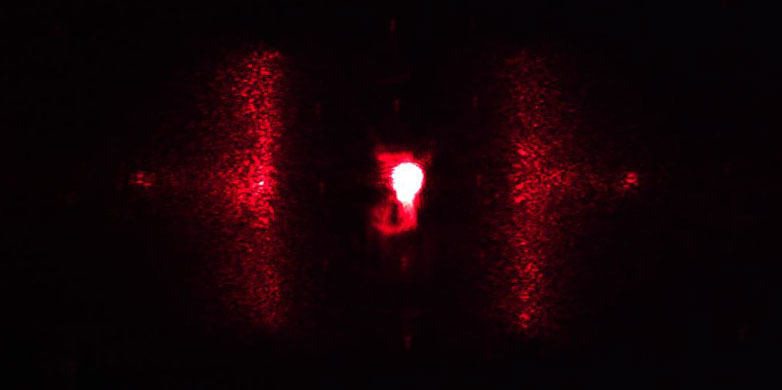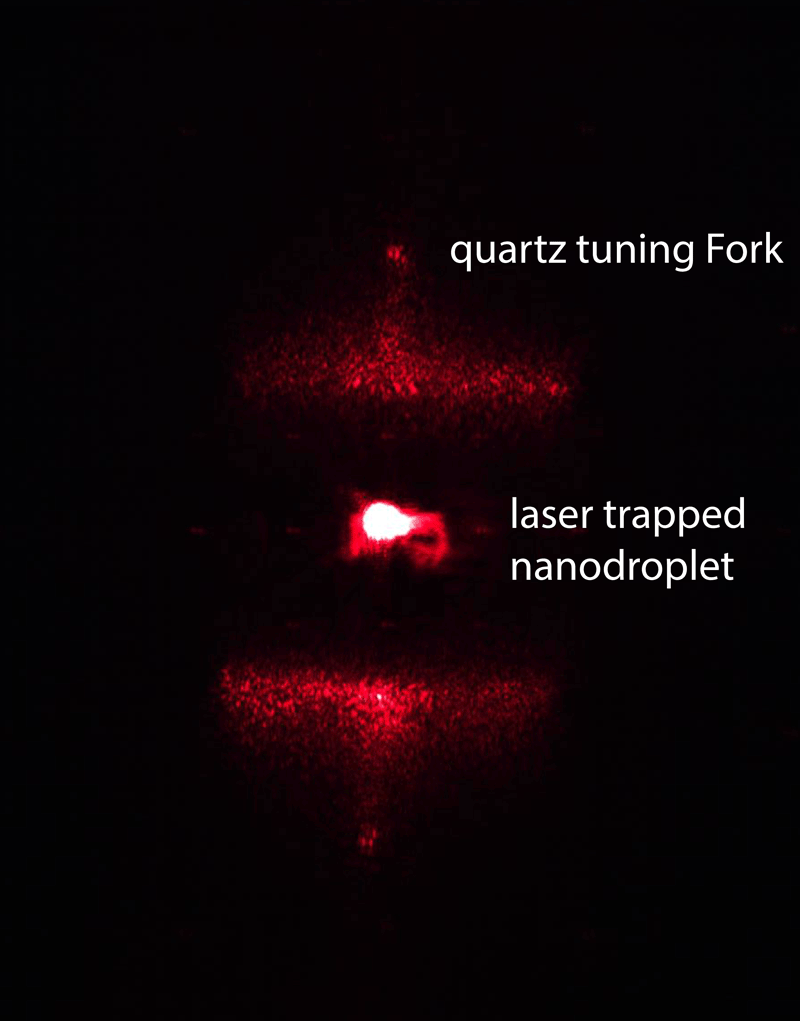Listening in on the Chemistry of Aerosols
Highlights
Scientists in the group of Prof. Signorell could for the first time precisely mimic the rate of chemical reactions that take place in aerosol droplets in the atmosphere. A new experimental setup enabled them to demonstrate that tiny droplets can act as focusing lenses for sunlight, accelerating photochemistry by up to an order of magnitude.

Sunlight passing through aerosol droplets drives photochemical reactions which have an impact on atmospheric chemistry and hence on the climate of our planet. The tiny aerosol droplets have the ability to focus the incident sunlight like nanoscale lenses, accelerating the rate of the chemical reactions depending on their size. In order to understand the rates of these reactions and to subsequently generate more precise climate models, it is important to be able to measure the light absorption and radiation focusing abilities of single aerosol droplets.

The group of Prof. Signorell now successfully created a setup that allows to precisely measure the photochemical behavior of aerosol nanodroplets. In order to study the photochemistry which is influenced by surface effects, transport properties, and especially optical phenomena, the measurements are directly made on tiny droplets that represent atmospheric aerosols. In the setup, single nanodroplets are trapped with the help of an “optical tweezer”, a laser beam capable of holding a tiny particle in place. A second laser is focused on the nanodroplet, triggering the decay of photoactive molecules dissolved inside the droplet, analogously to the photochemical reactions occurring in the atmosphere. The decay of the molecules results in a decay of light absorption that can be directly measured with high precision in a so-called photoacoustic setup: The heat generated by the chemical reaction causes a local increase in temperature of the air surrounding the droplet. This leads to the formation of a sound wave, which can be measured with the use of a nearby placed microphone. In an even more sensitive setup, the microphone is replaced by a minuscule quartz tuning fork where the nanodroplet is held with the same optical tweezer in between the tines. The advantages of the tuning fork are higher detection precision as well as low sensitivity to background noise. In order to measure the droplet’s absorption decay as a function of its diameter, the scattered laser light is recorded by a digital camera, allowing a direct measurement of the droplet’s size.
The researchers found that the sub-micron particles with a diameter of 500 nm cause an up to 10-fold increase in absorption of light, thus accelerating chemical reactions by one order of magnitude. This lens-like focusing ability diminishes for droplets in the micrometer range: Larger droplets show the same absorption behavior like thin bulk films with the same diameter as the droplet.
The photoacoustic setup enables for the first time the direct observation of the photoactive step in single aerosol droplet chemistry. With measurements that are representative of typical atmospheric aerosols, a strong size-dependence of the reaction time can be demonstrated. By using a tuning fork, an unmatched sensitivity with very low background noise is realized. Another advantage of this setup is the investigation of very small volumes. Nanodroplets can contain volumes as low as 10 attoliters (10-18 liters). Studying the photokinetics of single nanodroplets is just one example of using this new method. This setup could be used for a broad variety of experiments on single nanodroplets.
Full Article: external page Nature Communications, 7 (2016), 10941
Featured on the external page Nature Communications Facebook page
Photoacoustics of single laser-trapped nanodroplets for the direct observation of nanofocusing in aerosol photokinetics
Johannes W. Cremer, Klemens M. Thaler, Christoph Haisch, and Ruth Signorell
Nature Communications, 7 (2016), 10941. external page DOI